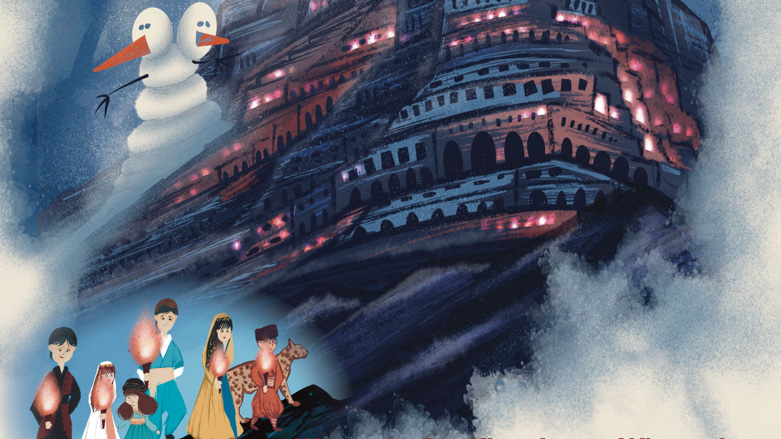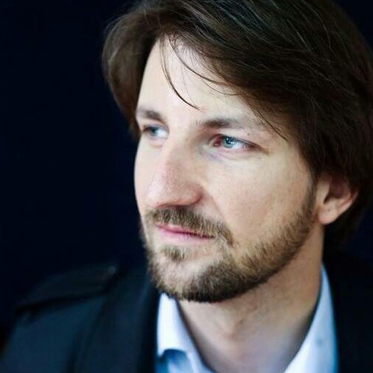New Kurdish children's book focuses on Newroz and the ancient city of Akre

ERBIL (Kurdistan 24) – Peri-Khan Aqrawi-Whitcomb's second children's book 'Children of the Sun and Bearers of Light' was published last week on Amazon. The book is a children's adaptation of the Kurdish Newroz saga about Kawa the Blacksmith and features the origin of Newroz mythology. It also focuses on the ancient city of Akre.
So thrilled to announce, just in time for Newroz, that finally after 2 years my new children's book is available online: "Children of the Sun and Bearers of Light
— Peri-Khan Aqrawi-Whitcomb (Kittani)🔆 (@Perixan7) March 6, 2022
How Kawa and his friends save the Spring Equinox, Newroz!" https://t.co/8j3A1pKte4 #TwitterKurds Newroz Pîroz Bît!
Her children's book focuses on how Kawa and his friends save the Spring Equinox, Newroz. It's her second book. It follows an adaptation of an old Kurdish epic 'Mem u Zin' by Ahmed Khani, titled Holy Dolma and Honey Pie - Of Friendships and Miracles.
"This is the first time it has been published. It is available as a paperback and on Kindle. And hopefully soon in audio, too," Aqrawi-Whitcomb told Kurdistan 24.
She was born in exile in Germany and was stateless until she was 12. Her father, Tariq Aqrawi, a retired senior diplomat, was born and raised in the old town of Akre, while her mother was born in the ancient town of Amedi in the Duhok province.
Read More: Akre, a Kurdish city coming from fire
"The book, like my first one, always focuses on several central messages: tolerance, friendship, unity, kindness, hope, and resilience, especially for our young, the most vulnerable but also most important members of our communities," Aqrawi-Whitcomb said.
"Akre has a long history of cohabitation of different religions and ethnicities until today, though like any conflict area, wars and hardship have strained communities on various levels," she added. "Newroz being an ancient Indo-Iranian celebration standing for resilience and the victory of the common people over tyranny and cold, harsh winters, cannot be more symbolic for the power of various people uniting for a common good: love of life."
"At the end of this book, I have attached several explanations and an interpretation of the actual mythology around Newroz and Kawa."
Passed most critical feedback for my kids book by my dearest friend and her two beautiful children in London - so now it’s not only the surely 🤪 unbiased critique of my kids https://t.co/MmLnVazv9C. #childrensbook #mythology #storyteller #Newroz #culturalheritage #twitterkurds pic.twitter.com/oA5YjbVTXY
— Peri-Khan Aqrawi-Whitcomb (Kittani)🔆 (@Perixan7) March 8, 2022
Akre itself has been named the official capital of Newroz by the Kurdistan Regional Government (KRG). Newroz celebrations this year will take place on March 20. Recently, US diplomats visited the ancient town to learn more about its traditions.
The US diplomats visited Akre Citadel and other cultural sites, where they were briefed on the town's history.
— Kurdistan 24 English (@K24English) March 9, 2022
📸U.S. Consulate General Erbil/Facebook pic.twitter.com/IhKmDlzOAo
Read More: Akre's famous traditional ice cream dates back to 1958
"If you ever have experienced Newroz celebrations in the old town of Akre, where my father is from, then you know and feel the ancient traditions of a thousand years come alive," Aqrawi-Whitcomb said.
"The torch-bearing, the rooftop fires, it is just magical. A must-see! Newroz, like in many other Kurdish cities and towns, means a lot to the people of Akre," she added. "Even under the times of Saddam, they would secretly go up the mountains and celebrate it, risking their lives."
The book also features sites from Akre, like the Shikefte Kutra cave.
"In fact, while the location of the mythology of Kawa in this book is fictional, in this case, Akre, the cave 'Shikefte Kutra,' which means 'Cave of the Dove' is real," she said.
"It is close to Kanî (Spring) Zerk in the old town of Akre," she added. "I have very fond memories hiking through the orchards and mountains in Akre with my family."
"Also, I remember numerous beautiful stories of my father about his childhood in Akre."
Her book will only be in English, for now.
"The idea is to also publish the book in Kurdish, German, French, and Swedish one day, but for now, as I am doing it with my own resources, I am taking it one step at a time," she said.
"In fact, I have published for free an English and Kurmanji audio version on Youtube for the Holy Dolma and Honey Pie book and donated a thousand copies to Green Kids and their donation program for underprivileged school districts," she added.
"One part of me always thought, in Kurdistan kids speak and learn so much English, at least have them have some English books that they feel represented by, but also learn something about our history."
She also said her parents, who were Kurdish university students in Europe in the 1960s, became political refugees due to being part of the resistance movement against the Baathist regime of Saddam Hussein, who ethnically persecuted Kurds, culminating in several genocides.
"Nevertheless, despite being in exile, and maybe because of this, they managed to instill in my brother and me a deep love for our mother tongue and give us a glimpse into the rich traditions of Kurdish oral storytelling, history, and culture," she said.
"Having had limited access to Kurdish children's books, due to years of linguistic, cultural, and ethnic persecution, I committed myself to continue my people's tradition of generational storytelling to safeguard national heritage."
"Always in the back of my mind, second and third generations of parents and children in diaspora," she added.
"In fact, I came up with both adaptations some years ago, telling these stories in Kurdish in a child-friendly way, every night as bedtime stories to my own young children when we were living in California."
